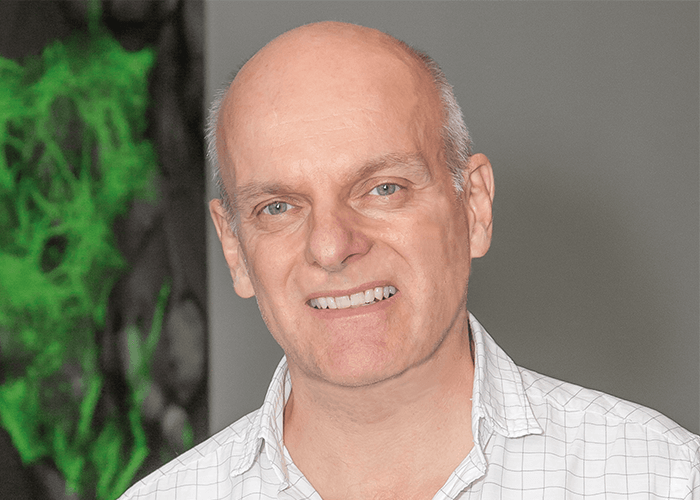With 20 years in proteomics behind him, Pierre Thibault is now a Professor of Chemistry and Biochemistry and a Principal Investigator at the Institute for Research in Immunology and Cancer at the Université de Montréal, and Director of the Center for Advanced Proteomic and Chemoproteomic Analyses (CAPCA). His group uses quantitative approaches to study the immunopeptidome of cancer cells and the molecular mechanisms and post-translational modifications governing cell signaling – with the end goal of making more personalized therapies for patients.
What is the goal of CAPCA?
CAPCA is a nationally funded facility providing analytical services to the Canadian research community. Our laboratory is equipped with cutting-edge, high-resolution accurate mass LC-MS systems that deliver high-sensitivity. We have expertise in utilizing this instrumentation in a range of areas; from protein identification to large-scale proteomic analyses (including isotopic labeling and label-free quantitation approaches), as well as deconvolution of drug mechanism of action by CRISPR/Cas9-based chemogenomic screens.

How have advances in analytical instrumentation changed proteomics?
Remarkable improvements in the sensitivity, resolution, and mass range of MS instruments in the last 15 years have enhanced the depth and coverage of proteome analyses. These advances extend to the trace-level detection of peptide antigens presented by major histocompatibility complex class I (MHC I) molecules that are expressed at less than 100 copies per cell. At the same time, we are now also able to characterize large protein assemblies from native cell membranes – a feat that would have been impossible just years ago.
These technological developments have expanded the detection capabilities of mass spectrometers and revealed massive biological complexity, which can confound protein identification. Separation techniques that can be combined with LC-MS are often sought to improve proteomics applications by increasing both specificity and the dynamic range of detectable proteins. In this context, high-field asymmetric waveform ion mobility spectrometry (FAIMS), a differential ion mobility technique that exploits ion separation at high and low electric fields, has demonstrated great potential by focusing and separating multiple-charge peptide ions from singly-charged interferences. The latest commercial solutions can achieve exceptional levels of selectivity in proteomic analysis and thus enable even more proteins to be identified.
How are you applying these technologies in biomedical research?
A key first step in developing personalized therapies is the identification of antigens unique to tumor cells; unfortunately, however, cancer cells tend to promote evasion of the immune system, sometimes by reducing the number of antigens presented. We want to identify those tumor-specific antigens (TSAs) and retrain T cells to recognize them in patients. To do this, we’ve initiated a large-scale search for antigens in different cancers, and have made significant advances in identifying minor antigens – some of which are currently being used in clinical trials.
Though we’re very pleased with the preliminary results, we also acknowledge that we need to cover other areas of the non-coding genome to increase the depth of TSAs identified. These areas have been somewhat neglected by large-scale genomics efforts, but we know these small transcripts are expressed as transient proteins in our proteome analysis. What’s more, we’ve also seen the corresponding peptides presented at the cell surface by MHC I molecules, which we think would be a great source of TSAs to target in the future.
What technological developments are needed to help push proteomics forward?
High-quality proteomic analysis relies on robust technologies that deliver reliable results over extended analyses. We continue to see significant improvements in the performance and ease-of-use of modern LC-MS systems; some of the latest mass spectrometers offer exceptional levels of robustness and can be used continuously for weeks with no change in sensitivity or peptide coverage. Improvements in the design of ion mobility devices are then helping to simplify and minimize maintenance requirements, while supporting uncompromised ion transmission for more consistent measurement sensitivity. As these advanced technologies are more broadly adopted, I expect that we will start to accelerate the translation of proteomics research into precision medicine applications.
For more from Pierre Thibault, click here to watch his recent webinar.




